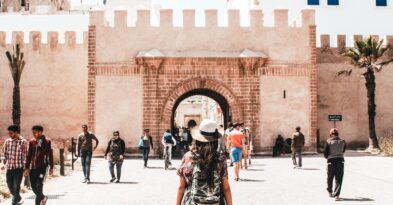The Crafts of Morocco
Handicrafts are an important industry in the country and there are shops in almost all cities and rural areas. In fact, there is a network of artisanal centers known as “ensemble artisanal” in the main tourist cities, where it is possible to see the artisans in action. They are also typical ceramic trays on the roads and tourist center.
At present we are witnessing the development of a renewed Moroccan handicraft, union between tradition and modern designs, original productions of great quality and contemporary style.
One of the great motivations of the tourist in Morocco are the purchases of crafts. The variety and beauty of the products is enormous.
Main artisan cities
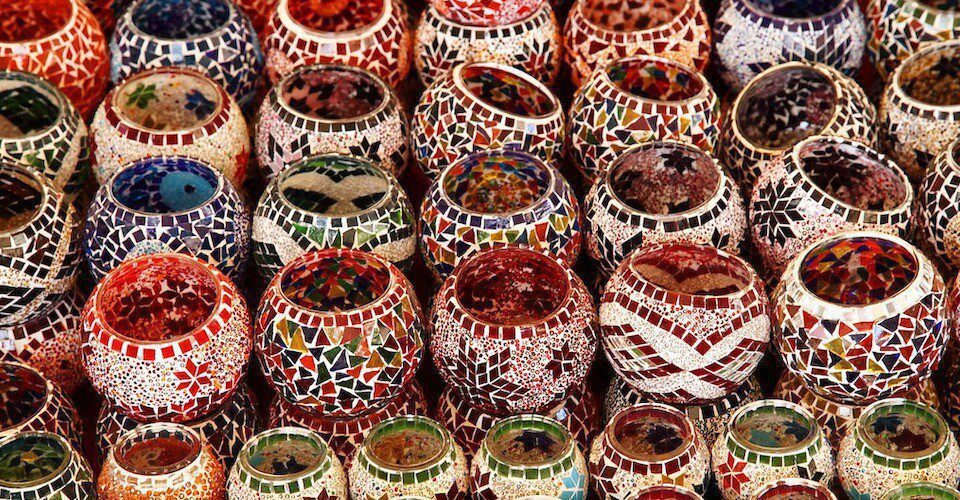
The following are most specialized cities in the production of handicrafts in the country, although in many cases the craft is made in the surrounding rural areas.
North: ChefChefchaouen , Tetuan , Ouezzane and Tangier.
Center: Fez, Meknes, Azrou, Taza and Marrakech.
South: Taroudant, Tazenakht, Goulmine, Erfoud, Alnif, Kelaa Megouna and Tiznit.
Coast: Casablanca, Rabat, Sale, Safi and Essaouira.
What to buy in Morocco?
Carpets
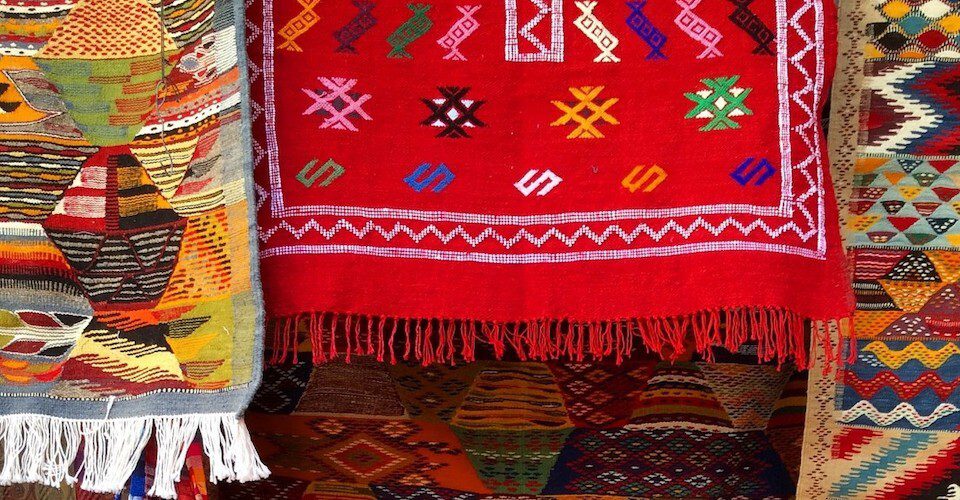
In Morocco, you will find two main types of carpets: the urban carpet and the Berber rug. Urban carpets, traditionally made in the Rabat capital and surrounding areas, are probably the Moroccan carpets most people imagine. They are thickly woven and intricately laced, usually decorated with geometric patterns. The best cities to buy urban carpets are Rabat and Fes, and if you don’t want to experience the pleasure of bargaining, you can buy them in government-sponsored stores where prices are uniform.
Berber carpets are made in the countryside by local Berber in Morocco. Each tribe and region have its own style, traditionally, making carpets is a woman’s job. Since these carpets tend to be thinner than urban carpets, they are usually hung on the wall as tapestries. Berber carpets are all over Morocco. One of the best places to buy them is in the women’s cooperatives, where the larger portion of the profits are directly given to workers.
Textile Crafts

Elaboration of Chilabas, Kaftan, Riffian aprons, shawls to cover the head, handkerchiefs, hats, the hendira (striped Berber dress blanket), handbags, slippers, and even the large Haimas, are produced all over the country, in many cases in cooperatives of rural or urban women.
The embroidery is manufactured by women in rural areas, on traditional cotton, linen, silk or wool serge, but also on poplin and even on nylon. They execute the cross stitch decorating tablecloths, rugs, tableware, pillows, quilts, sheets, shirts, wedding dresses, caftans with Berber inspired geometric motifs, or copied from foreign models.
Those of Rabat, usually represent geometric shapes or the female silhouette.
In Fez, they are blue or red, mixing geometric patterns with naturalists, trees, leaves and birds.
In Tetouan, Chefchaouen, they form stylized bouquets, mosiac and stars.
Those of Sale, are monochrome in two or three tones.
Basketry

“Less noble” craftsmanship is one of the most widespread occupations in Morocco, thanks to the diversification of the materials used and thanks to the fact that these are typical of the field, (palm leaves).
They manufacture carpets, hats, baskets, bags etc, very exotic and cheap. Wicker objects manufactured in Meknes are very appreciated.
Metal Crafts
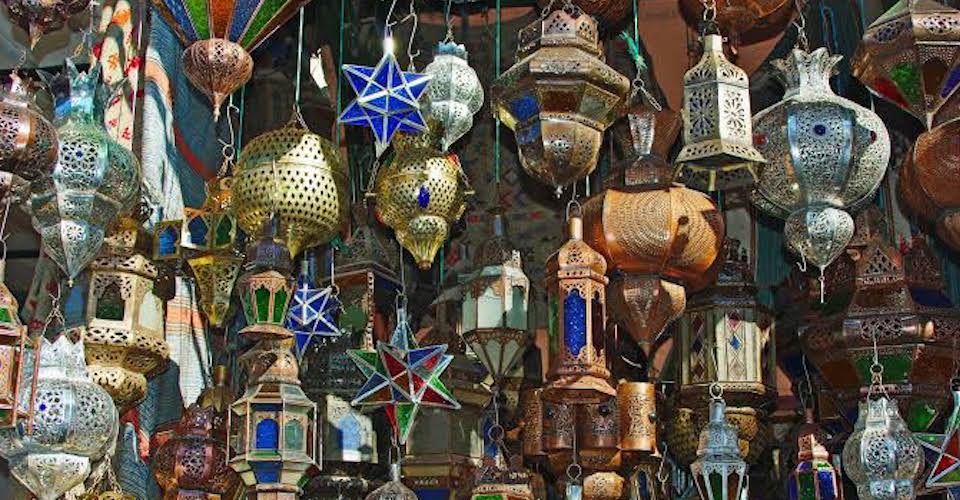
Copper, tin and brass, beautifully carved by hand, its main centers are in Fes, Marrakech, Meknes, Tangier, Tetouan and Casablanca, typical trays, lanterns, lamps, sconces, chandeliers, chairs, teapots, pots, etc.
Tin products are typical of Meknes, where damascene also stands out in the form of metal animal figures inlaid with silver thread and mosaics.
Wood crafts
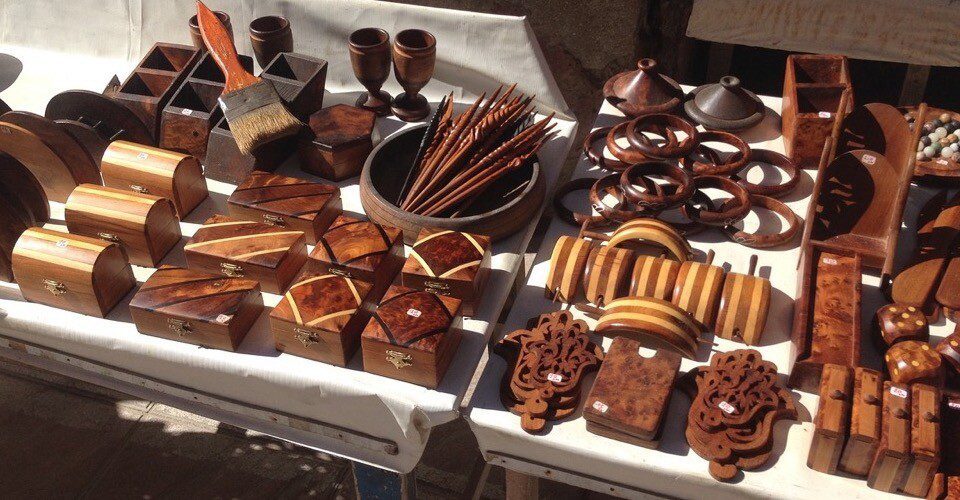
It is typical of Essaouria, made with thuya wood or cedar, simple or formed marquetry type drawings. Great works are made like those carved on the ceilings of mosques, mausoleum and medersa of the cities.
Cedar wood are manufactured in Azrou, animal figures, frames trays and small furniture. Other producing centers are Fez, Marrakech, Meknes, Rabat, Khemiset, Taza, Tetouan and Chefchaouen, etc., manufacturing many traditional objects carved in wood and painted.
Leather crafts
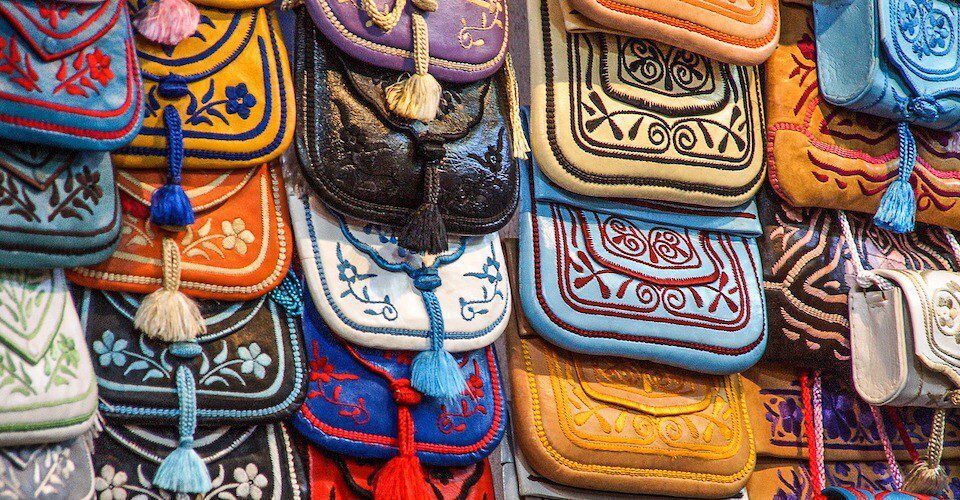
They are made of skin of goat, camel and other animals, typical in dresses, shoes, poufs and cushions, bags, wallets, etc. There are more elaborate objects, adding golden motifs with thin layers of 22 carat gold.
They are manufactured in many towns and cities, highlighting those of Fez, Marrakech, Meknes, Rabat, Tangier and Tetouan.
Jewelry crafts
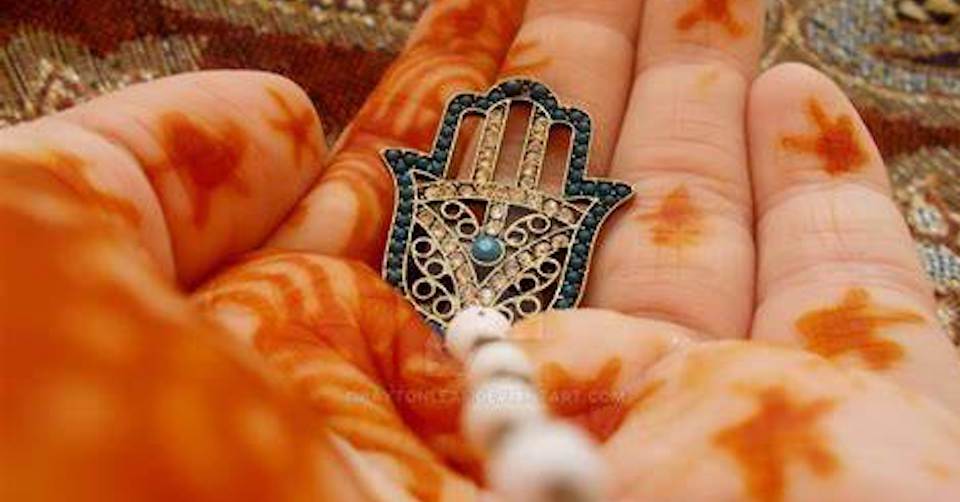
Essential in the feminine dress, in rural areas, often used in weddings are the Sedal (wool band decorated with coins, amber and coral), Lebra (gold necklace and precious stones of Moorish origin), Nbail (silver bracelets and precious stones), these jewels are manufactured by Berbers in Agadir, Tiznit and Guelmine, Ouarzazate.
The urban jewels are of gold or silver, delicately chiseled and filigreed, manufactured in all the big cities, especially in Fes Meknes, Marrakech, Rabat-Sale.
Crafts in wax

Developed in Casablanca, besides making candles, they make different decorating objects mixing with Italian style that is exported to the whole world, highlighting the vases, candle holders, lanterns and beautifully decorated vessels.
Crafts of musical instruments
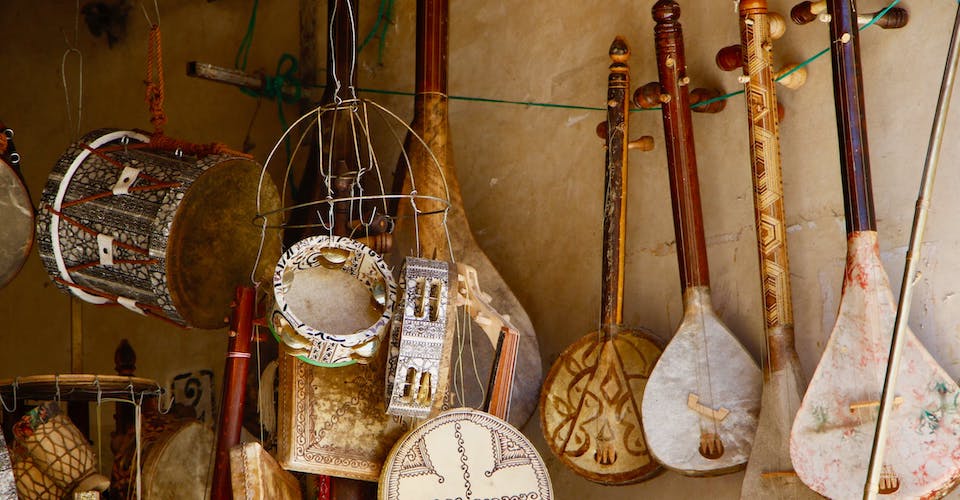
The best sellers are the tamborines, the Tebilat twin tambourines, the Tarija (pottery drum), and also, the guitars like the Qus and Rebab or the primitive flutes La Gayta, (typical of Ouezzane) and the Nira. They are manufactured in the great artisan centers of Fes, Marrakech, Meknes and Tetouan.
The ceramic
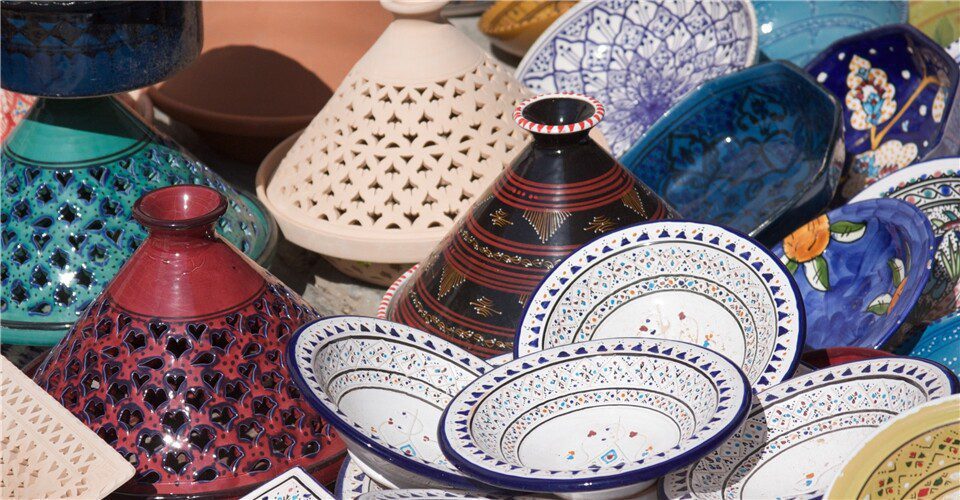
With finely decorated plates, vases, vases, jars, pots, lamps, towers, tiles, etc.The highest quality colors and price is the ceramic of Fes, the cheapest manufactured in Safí and Salé, the latter of modern designs, more functional and for domestic use, are famous for the tiles in Meknes.
The most primitive clay pottery is produced in the mountainous areas of the Rif, provinces of Chefchaouen, Ouezzane, and Alhucemas, Taounate etc, and in the Atlas.
In Marrakech there is a great development of mud crafts, with new designs.
In Tetouan, tiles and mosaics stand out, and tables and mosaic fountains are also typical, both in this city and in Chefchaouen.
Products with Fossils and stone

With fossil-bearing rocks sources are made into various utensils and decorations, such as tables, plates, bathtubs, trays, plates, clocks, ashtrays.
The crafts with stones, makes different objects, ashtray figures etc, is typical of the Sahara, Erfoud, Midelt, Anti Atlas, Talioudine, and Khemisset (marble).
Contact us for more travel information!



